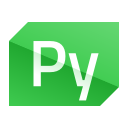QGraphicsLinearLayout¶
The
QGraphicsLinearLayoutclass provides a horizontal or vertical layout for managing widgets in Graphics View. MoreвҖҰ

Synopsis¶
Functions¶
def
addItem(item)def
addStretch([stretch=1])def
alignment(item)def
dump([indent=0])def
insertItem(index, item)def
insertStretch(index[, stretch=1])def
itemSpacing(index)def
orientation()def
removeItem(item)def
setAlignment(item, alignment)def
setItemSpacing(index, spacing)def
setOrientation(orientation)def
setSpacing(spacing)def
setStretchFactor(item, stretch)def
spacing()def
stretchFactor(item)
Detailed Description¶
The default orientation for a linear layout is
Horizontal. You can choose a vertical orientation either by callingsetOrientation(), or by passingVerticaltoQGraphicsLinearLayoutвҖҳs constructor.The most common way to use
QGraphicsLinearLayoutis to construct an object on the heap with no parent, add widgets and layouts by callingaddItem(), and finally assign the layout to a widget by callingsetLayout().scene = QGraphicsScene() textEdit = scene.addWidget(QTextEdit()) pushButton = scene.addWidget(QPushButton()) layout = QGraphicsLinearLayout() layout.addItem(textEdit) layout.addItem(pushButton) form = QGraphicsWidget() form.setLayout(layout) scene.addItem(form)You can add widgets, layouts, stretches (
addStretch(),insertStretch()orsetStretchFactor()), and spacings (setItemSpacing()) to a linear layout. The layout takes ownership of the items. In some cases when the layout item also inherits fromQGraphicsItem(such as QGraphicsWidget ) there will be a ambiguity in ownership because the layout item belongs to two ownership hierarchies. See the documentation ofsetOwnedByLayout()how to handle this. You can access each item in the layout by callingcount()anditemAt(). CallingremoveAt()orremoveItem()will remove an item from the layout, without destroying it.
Size Hints and Size Policies in QGraphicsLinearLayout¶
QGraphicsLinearLayoutrespects each itemвҖҷs size hints and size policies, and when the layout contains more space than the items can fill, each item is arranged according to the layoutвҖҷs alignment for that item. You can set an alignment for each item by callingsetAlignment(), and check the alignment for any item by callingalignment(). By default, items are aligned to the top left.
Spacing within QGraphicsLinearLayout¶
Between the items, the layout distributes some space. The actual amount of space depends on the managed widgetвҖҷs current style, but the common spacing is 4. You can also set your own spacing by calling
setSpacing(), and get the current spacing value by callingspacing(). If you want to configure individual spacing for your items, you can callsetItemSpacing().
Stretch Factor in QGraphicsLinearLayout¶
You can assign a stretch factor to each item to control how much space it will get compared to the other items. By default, two identical widgets arranged in a linear layout will have the same size, but if the first widget has a stretch factor of 1 and the second widget has a stretch factor of 2, the first widget will get 1/3 of the available space, and the second will get 2/3.
QGraphicsLinearLayoutcalculates the distribution of sizes by adding up the stretch factors of all items, and then dividing the available space accordingly. The default stretch factor is 0 for all items; a factor of 0 means the item does not have any defined stretch factor; effectively this is the same as setting the stretch factor to 1. The stretch factor only applies to the available space in the lengthwise direction of the layout (following its orientation). If you want to control both the itemвҖҷs horizontal and vertical stretch, you can useQGraphicsGridLayoutinstead.
QGraphicsLinearLayout Compared to Other Layouts¶
QGraphicsLinearLayoutis very similar toQVBoxLayoutandQHBoxLayout, but in contrast to these classes, it is used to manage QGraphicsWidget and QGraphicsLayout instead ofQWidgetandQLayout.See also
- class PySide2.QtWidgets.QGraphicsLinearLayout([parent=None])В¶
PySide2.QtWidgets.QGraphicsLinearLayout(orientation[, parent=None])
- param parent:
- param orientation:
Constructs a
QGraphicsLinearLayoutinstance usingHorizontalorientation.parentis passed to QGraphicsLayout вҖҳs constructor.Constructs a
QGraphicsLinearLayoutinstance. You can pass theorientationfor the layout, either horizontal or vertical, andparentis passed to QGraphicsLayout вҖҳs constructor.
- PySide2.QtWidgets.QGraphicsLinearLayout.addItem(item)В¶
- Parameters:
This convenience function is equivalent to calling
insertItem(-1,item).
- PySide2.QtWidgets.QGraphicsLinearLayout.addStretch([stretch=1])В¶
- Parameters:
stretch вҖ“ int
This convenience function is equivalent to calling
insertStretch(-1,stretch).
- PySide2.QtWidgets.QGraphicsLinearLayout.alignment(item)В¶
- Parameters:
- Return type:
Alignment
Returns the alignment for
item. The default alignment isAlignTop|AlignLeft.The alignment decides how the item is positioned within its assigned space in the case where thereвҖҷs more space available in the layout than the widgets can occupy.
See also
- PySide2.QtWidgets.QGraphicsLinearLayout.dump([indent=0])В¶
- Parameters:
indent вҖ“ int
- PySide2.QtWidgets.QGraphicsLinearLayout.insertItem(index, item)В¶
- Parameters:
index вҖ“ int
Inserts
iteminto the layout atindex, or before any item that is currently atindex.See also
addItem()itemAt()insertStretch()setItemSpacing()
- PySide2.QtWidgets.QGraphicsLinearLayout.insertStretch(index[, stretch=1])В¶
- Parameters:
index вҖ“ int
stretch вҖ“ int
Inserts a stretch of
stretchatindex, or before any item that is currently atindex.
- PySide2.QtWidgets.QGraphicsLinearLayout.itemSpacing(index)В¶
- Parameters:
index вҖ“ int
- Return type:
float
Returns the spacing after item at
index.See also
- PySide2.QtWidgets.QGraphicsLinearLayout.orientation()В¶
- Return type:
Returns the layout orientation.
See also
- PySide2.QtWidgets.QGraphicsLinearLayout.removeItem(item)В¶
- Parameters:
Removes
itemfrom the layout without destroying it. Ownership ofitemis transferred to the caller.See also
removeAt()insertItem()
- PySide2.QtWidgets.QGraphicsLinearLayout.setAlignment(item, alignment)В¶
- Parameters:
alignment вҖ“
Alignment
Sets the alignment of
itemtoalignment. IfitemвҖҳs alignment changes, the layout is automatically invalidated.See also
alignment()invalidate()
- PySide2.QtWidgets.QGraphicsLinearLayout.setItemSpacing(index, spacing)В¶
- Parameters:
index вҖ“ int
spacing вҖ“ float
Sets the spacing after item at
indextospacing.See also
- PySide2.QtWidgets.QGraphicsLinearLayout.setOrientation(orientation)В¶
- Parameters:
orientation вҖ“
Orientation
Change the layout orientation to
orientation. Changing the layout orientation will automatically invalidate the layout.See also
- PySide2.QtWidgets.QGraphicsLinearLayout.setSpacing(spacing)В¶
- Parameters:
spacing вҖ“ float
Sets the layoutвҖҷs spacing to
spacing. Spacing refers to the vertical and horizontal distances between items.
- PySide2.QtWidgets.QGraphicsLinearLayout.setStretchFactor(item, stretch)В¶
- Parameters:
stretch вҖ“ int
Sets the stretch factor for
itemtostretch. If an itemвҖҷs stretch factor changes, this function will invalidate the layout.Setting
stretchto 0 removes the stretch factor from the item, and is effectively equivalent to settingstretchto 1.See also
- PySide2.QtWidgets.QGraphicsLinearLayout.spacing()В¶
- Return type:
float
Returns the layoutвҖҷs spacing. Spacing refers to the vertical and horizontal distances between items.
See also
- PySide2.QtWidgets.QGraphicsLinearLayout.stretchFactor(item)В¶
- Parameters:
- Return type:
int
Returns the stretch factor for
item. The default stretch factor is 0, meaning that the item has no assigned stretch factor.See also
В© 2022 The Qt Company Ltd. Documentation contributions included herein are the copyrights of their respective owners. The documentation provided herein is licensed under the terms of the GNU Free Documentation License version 1.3 as published by the Free Software Foundation. Qt and respective logos are trademarks of The Qt Company Ltd. in Finland and/or other countries worldwide. All other trademarks are property of their respective owners.
